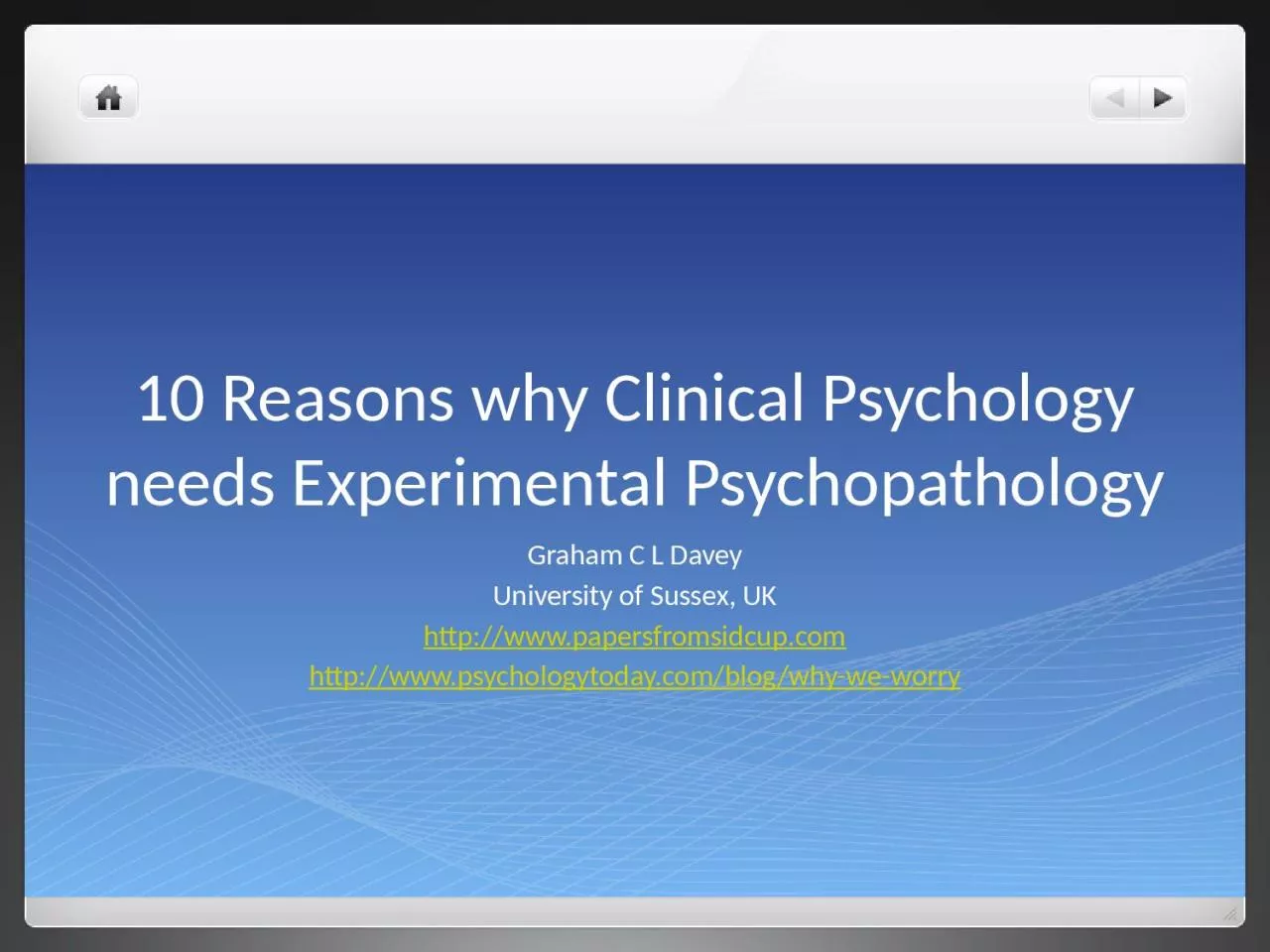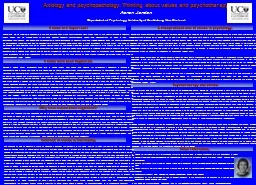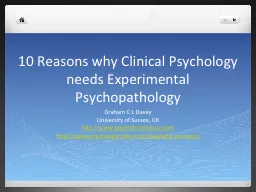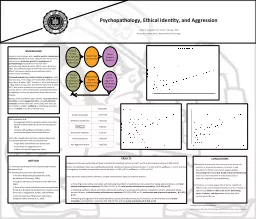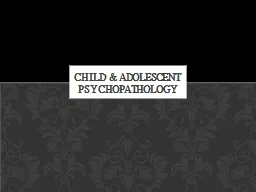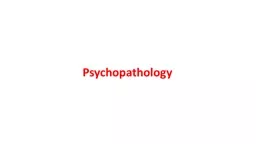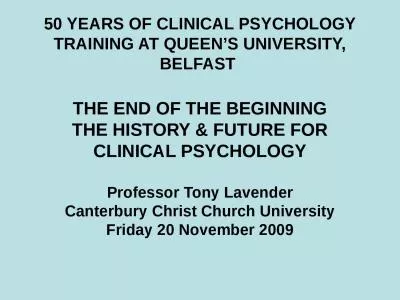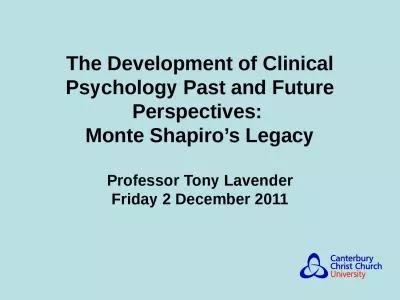PPT-10 Reasons why Clinical Psychology needs Experimental Psychopathology
Author : hadly | Published Date : 2024-02-02
Graham C L Davey University of Sussex UK http wwwpapersfromsidcupcom httpwwwpsychologytodaycomblogwhywe worry 3 Misunderstandings of EP by Clinical PsychologistsPsychiatrists
Presentation Embed Code
Download Presentation
Download Presentation The PPT/PDF document "10 Reasons why Clinical Psychology needs..." is the property of its rightful owner. Permission is granted to download and print the materials on this website for personal, non-commercial use only, and to display it on your personal computer provided you do not modify the materials and that you retain all copyright notices contained in the materials. By downloading content from our website, you accept the terms of this agreement.
10 Reasons why Clinical Psychology needs Experimental Psychopathology: Transcript
Download Rules Of Document
"10 Reasons why Clinical Psychology needs Experimental Psychopathology"The content belongs to its owner. You may download and print it for personal use, without modification, and keep all copyright notices. By downloading, you agree to these terms.
Related Documents

